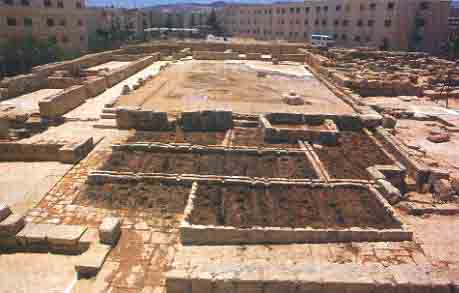Image Details

Zev Radovan and Shlomi Amami, courtesy Yitzhak Magen
Country living. A well-irrigated farm lay within the ruined monastery’s walls during the early Arab period. A farmhouse adjoined the tilled land, suggesting that the Persian invasion of 614 left the monastery buildings uninhabitable. An Umayyad coin, an Arabic inscription and Arab pottery found here date the farm building to the eighth century C.E.
Archaeologists discovered pilfered fragments from the monastic buildings throughout the farm. An end-post from the chancel screen that once separated the chancel, or sanctuary, of the church from the nave was converted into an irrigation channel: Water ran along the groove that once supported the chancel screen.
